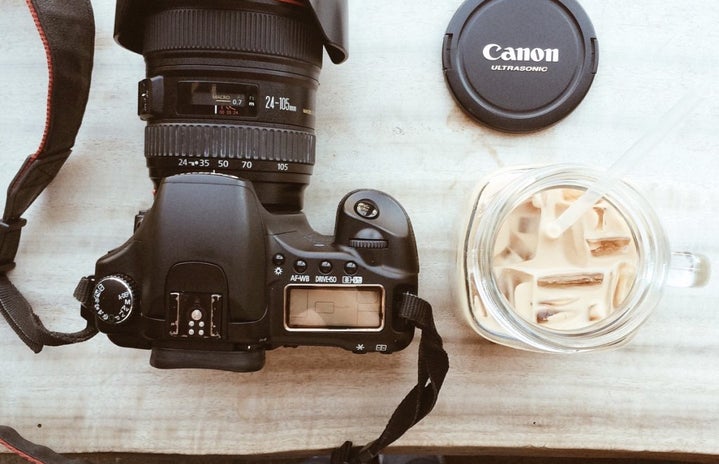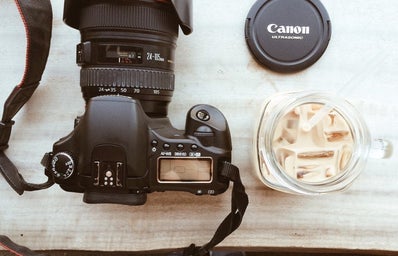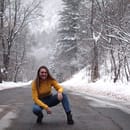I want to start off this article with a preface that I am in no way, shape, or form a professional at any type of photography. I am a beginner and as such, it is my hope that as I learn to manipulate my camera and try new styles of photography, so will you.
Before I dive into what I did to capture the pictures in this article, it is important to define a few terms pertaining to the manual setting in your camera.
The first of these terms is the aperture or ‘F/stop’. This is the opening in the lens of your camera which allows light through. By adjusting this, it will change the depth-of-field (how in-focus the background is). Smaller F/stops will blur the background, making the subject of your picture the only thing in focus. These are better for portrait pictures. Larger F/stops will focus everything in the frame and will keep the entire scene sharp.
Next we have the ISO, which is the camera’s sensitivity to light. Typically, lower ISOs are better for brighter lighting and do not add much grain to your photos, while higher ISOs are better for low lighting such as night photography and will add a grain effect to your photos. HOWEVER, despite what I just said, depending on the type of effect you are looking for in your photos, you may choose to use a lower ISO in low lighting and vice versa as I did for the photos I will share shortly.
Finally, the last term I want to go over is shutter speed. This is quite literally the speed your shutter opens/closes. Longer speeds equate to your shutter staying open longer which will blur any movement within the frame. This will create effects such as dragging lines within your image. Shorter speeds equate to your shutter closing much faster which will freeze movement and allow for little to no blurring.
Due to my limited experience in night photography, I decided to try two different styles. The first of these is dragging the movement of cars on a freeway. This is the simpler of the two styles I chose to do. Only three things are required in order to capture this style of picture.
-
A camera: Obviously, in order to capture any sort of picture, you need to have some mechanism to do this. Any sort of camera will work as long as you can change the manual settings. It is worth noting that the camera I used to capture these pictures is a Canon Rebel T6; however, any camera will do.
-
A tripod or steady surface: With night photography, (and any low light photography), it is SUPER important to hold your camera steady. Because of the low lighting associated with these types of photos, the photographer will increase the shutter speed, which allows the camera to absorb more light and also causes the movement to blur. While it is possible, it is unrealistic to hold the camera steady for that amount of time; this is especially true when even the movement of your breathing can cause the camera to produce an unfocused image, hence the need for a steady surface to sit your camera upon or a tripod.
-
Time: This is probably the most important requirement. Even experienced photographers do not capture the “perfect picture” the first time. Give yourself adequate time to play with the settings and adjust your mechanisms in order to get the desired effect.
Now let’s dive into my first image.

F/stop (aperture): 29, Shutter: 30sec, ISO: 100
There are only a few things that I want to point out with this image. The first is that for this image, and for all of my images, I chose to use a very low ISO (ISO 100). This was done so that the camera would focus on the desired lights without blowing out the brightness of my image (having low exposure ensures that only the light of the cars would be the source of light for the shot). Using a low ISO also ensured that the quality of my image would remain intact by not adding the grain effect to my picture. In addition to this, I chose to use a larger aperture in order to keep the entire path of light in focus. Finally, dragging the shutter for 30 seconds allowed for cars to have enough time to drive the entire stretch of road in my shot, which caused the movement to blur the entire length.
My next two images fall under the second style I chose to try: steel wool photography. This style is more complex due to the fact that more items are required in order to capture the ‘gram-worthy pic.
Requirements (in addition to the three requirements listed above):
-
Steel wool: This is the source of the light in this style of photo. It is best to use finer grades of wool (grade 0s such as 000 or 0000) because this will release more sparks.
-
Baking whisk: The steel wool will be in the bottom of the whisk which will hold it together, but also allow airflow through the steel wool as it’s burning.
-
Rope/chain: This is necessary to allow you to swing the steel wool around and cause sparks to fly. This will also provide a bit of distance between your hands and the burning steel wool.
-
Tape: Use this to connect your rope/chain to the handle of the baking whisk.
-
Lighter: Use this to ignite the steel wool.
-
Fire extinguisher: This is optional; HOWEVER, it is highly recommended because you never know what will happen when you are working with sparks and fire.
-
Someone willing to help and potentially light themselves on fire: This is also optional, but it will make your life so much easier. I took a few photos where I would set up the shot and then hit the self-timer on my camera so I could be the one in the photo, but this is a long process and it is much easier to have someone else in the shot as you take the picture.
-
Have FUN!: Try making different shapes and using various shutter speeds until you find what you are looking for. Have fun with it!
The process: Attach the baking whisk to the rope/chain using tape. Take a good amount of steel wool and place it in the bottom of the whisk. Using the lighter, light the steel wool in a few spots. Begin to swing the whisk around by holding the rope/chain tightly. This will allow the now burning steel wool to get air into it, fueling the burn, and causing it to release sparks.
Now for my final two photos.
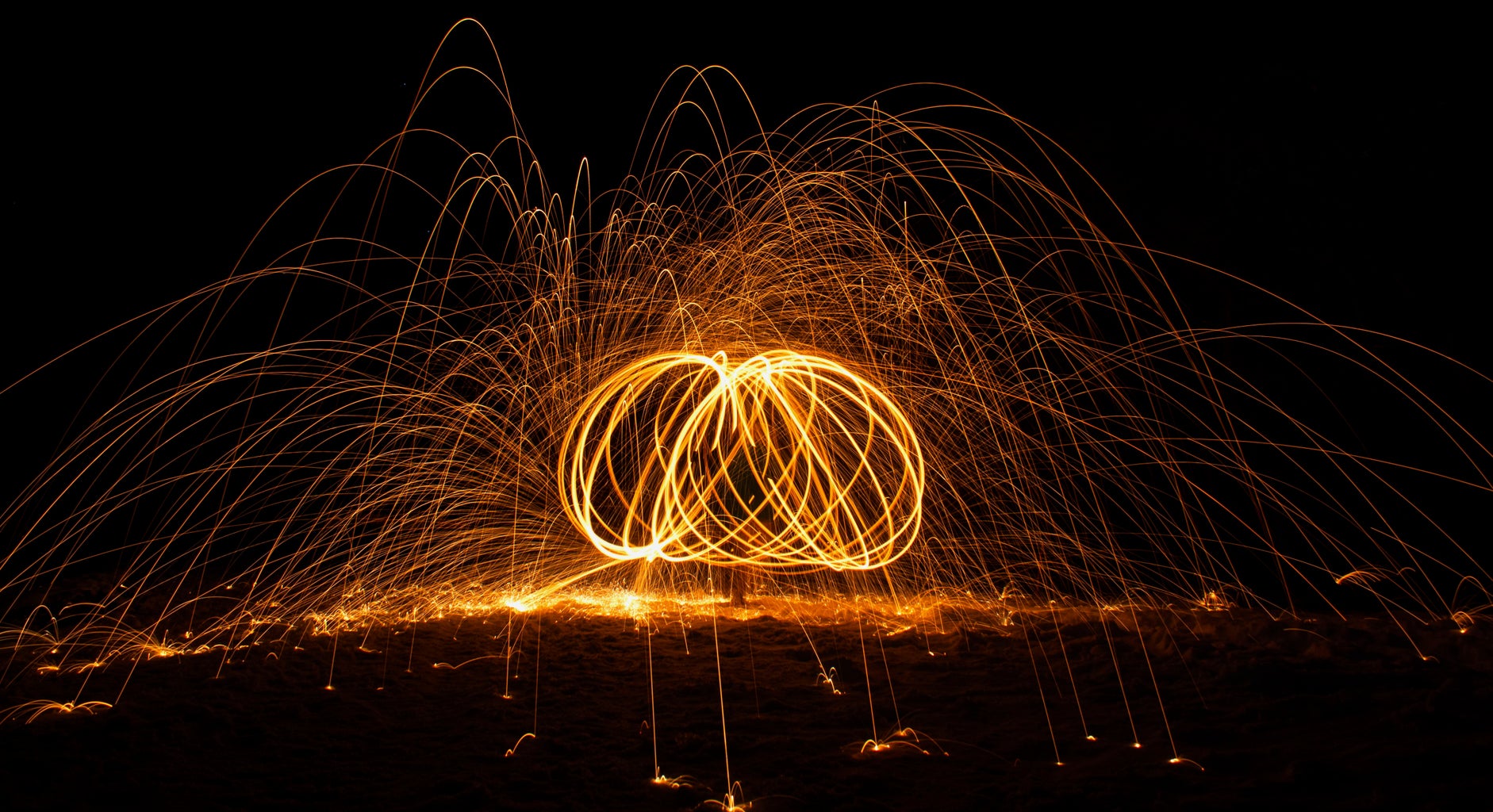
F/stop (aperture): 8, Shutter: 13sec, ISO: 100, 0000 grade steel wool used
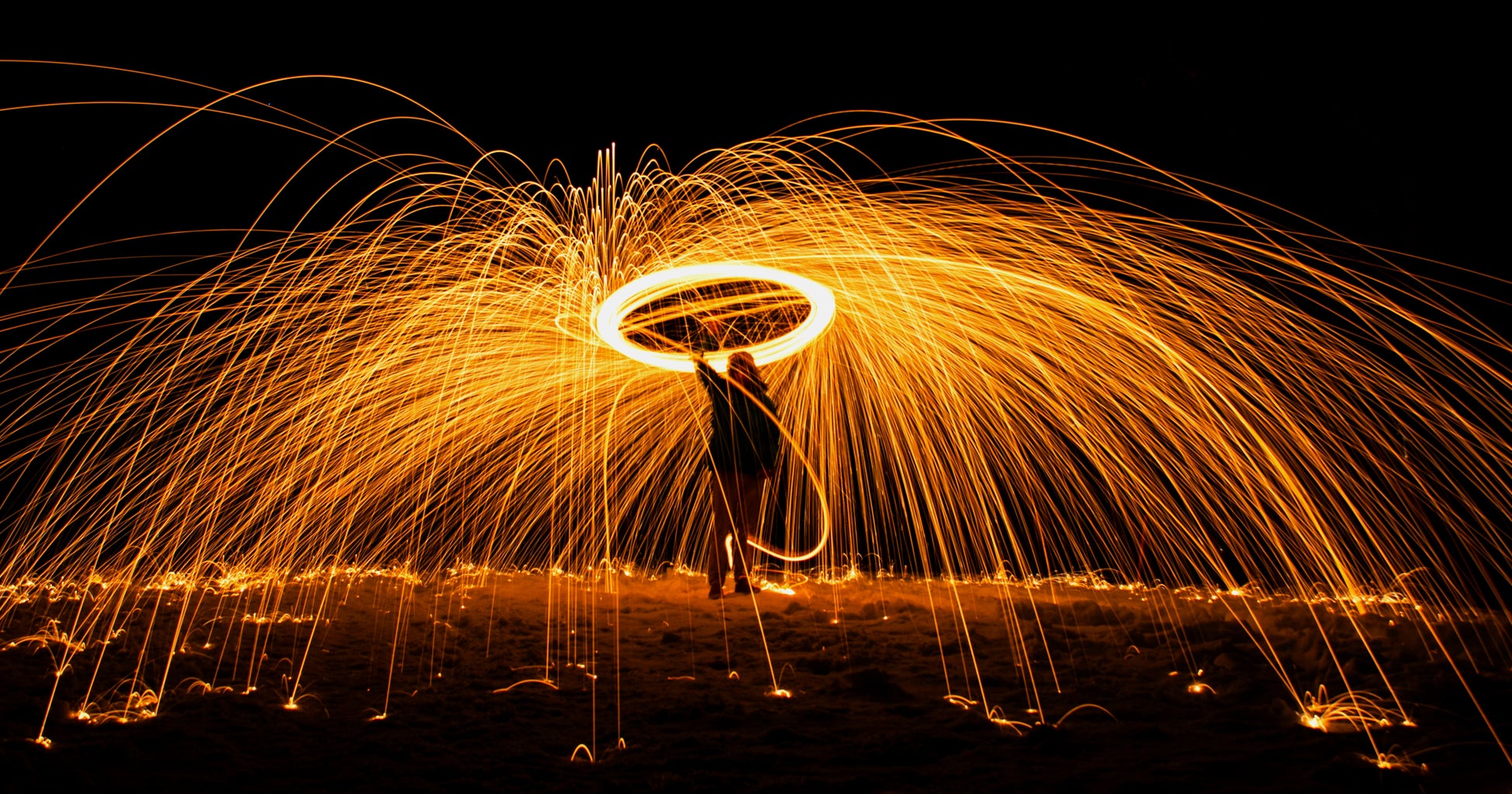
F/stop (aperture): 8, Shutter: 15sec, ISO: 100, 0000 grade steel wool used
For these photos I chose to use a lower F/stop so that the focus of the picture would be the person and the steel wool sparks. I wanted to blur out the background as much as possible. In addition to this, I chose to use a slightly shorter shutter that was still long enough to capture the full movement of the sparks. The steel wool tends to fizzle out fairly quickly, so for this reason a shutter speed of around 15 seconds was perfect for my pictures.
Keep in mind that it took many attempts and failures to capture these pictures. Don’t be afraid to adjust your settings to the extremes to see what happens. This will both help you learn these different functions and learn about your camera and its manual settings. Take some risks and have fun!
